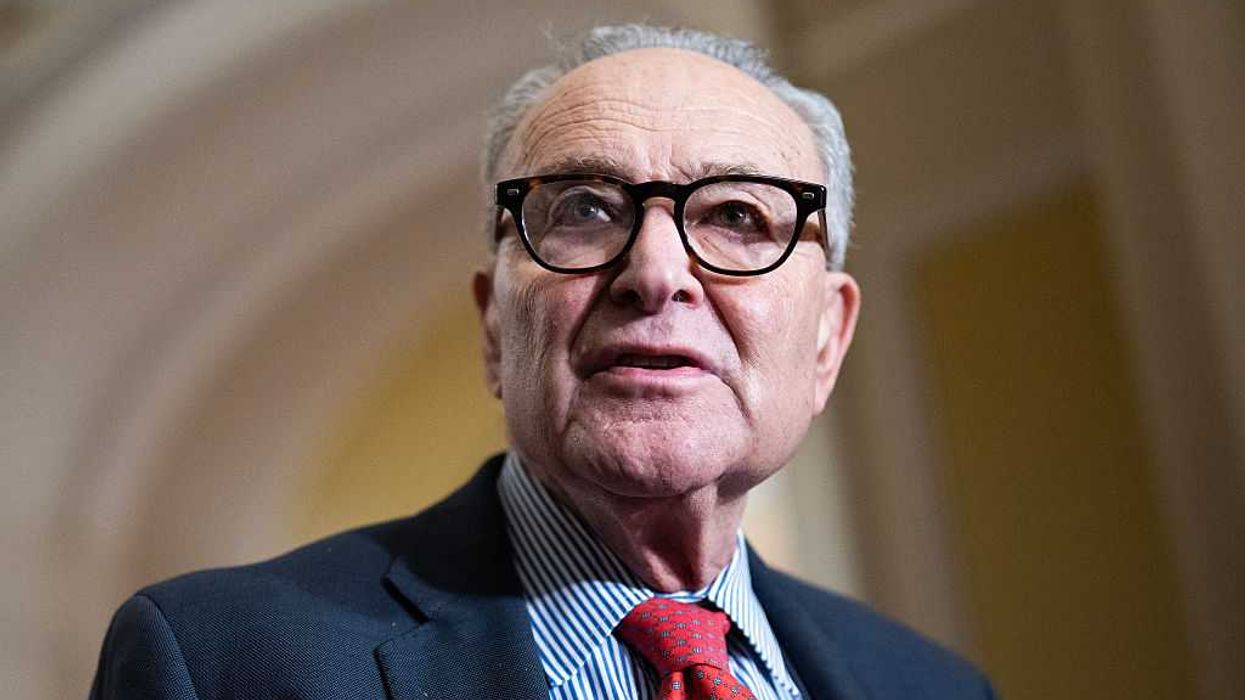© 2025 Blaze Media LLC. All rights reserved.
"Federal workers made an average $75,296 in pay last year, plus $28,323 in medical, pension and other benefits."
Remember when the Wall Street Journal’s Stephen Moore wrote that we have “become a nation of takers” as opposed to a “nation of makers”?
What did he mean by that?
“More Americans work for the government than work in construction, farming, fishing, forestry, manufacturing, mining and utilities combined,” Moore wrote back April. “Nearly half of the $2.2 trillion cost of state and local governments is the $1 trillion-a-year tab for pay and benefits of state and local employees.”
Therefore, it comes as no surprise that so many states and cities cannot pay their bills, Moore concluded.

Eight months later, it appears that his analysis may have been spot-on correct.
“Federal pay rose an average of 1.3 percent for the budget year that ended Sept. 30, according to newly released federal data,” USA Today reports.
By comparison, the wages of private workers rose 1.2 percent during the period, the same rate as state and local government pay growth, the Bureau of Labor Statistics reports.
Translation: now is a great time to be a Federal worker.
“Federal workers made an average $75,296 in pay last year, plus $28,323 in medical, pension and other benefits,” a USA Today analysis found.
"That's about 60 percent more than the average private wage, a difference explained largely by higher education levels and more professional jobs in the federal workforce," the report adds.
 Many would find it odd that, during this time of economic instability, Federal compensation has soared in the past five years. Add to that the fact that the federal government in recent years has hired “several hundred thousand new employees, including many well-paid lawyers and doctors.”
Many would find it odd that, during this time of economic instability, Federal compensation has soared in the past five years. Add to that the fact that the federal government in recent years has hired “several hundred thousand new employees, including many well-paid lawyers and doctors.”
With several recent job openings and a constantly swelling payroll, is it any wonder that the world of federal employment had become the “go-to place” for so many young people?
Consider these facts (via USA Today):
PAY:
- A 20-to 24-year-old auto mechanic started at an average of $46,427 this year, up from $36,750 five years ago. The government hires about 400 full-time auto mechanics a year.
- A 30- to 34-year-old lawyer started at an average of $101,045 this year, up from $79,177 five years ago. The government hires about 2,500 lawyers a year.
- The portion of federal workers earning $100,000 or more grew from 12 percent in 2006 to 22 percent in 2011.
- A mechanical engineer, age 25 to 29, started at $63,675, up from $51,746 in 2006. The government hires about 600 mechanical engineers a year.
JOB SECURITY
- The rate of quitting has fallen 29 percent since 2007.
- Ordinary retirements are down 11 percent.
- Early retirements are down two-thirds.
- Disability departures have dropped one-third
NEAR IMPOSSIBLE TO GET FIRED:
- Under the Obama administration, layoffs from reorganizations have dropped by two-thirds to fewer than 300 a year in the 2.1 million person workforce.
- Workers are 13 times more likely to die of natural causes than get laid off from the federal government.
What’s the justification for these pay raises? There must be some sort of explanation.
“The government is classifying more new hires — secretaries, mail clerks, chaplains, laundry workers, electrical engineers and wildlife biologists — as taking more demanding versions of their jobs and deserving more pay [emphasis added],” USA Today reports.
Apparently, the pay rates and the increases are supposed to reflect the fact that a federal cook, clerk, laundry worker, and wildlife biologist all have jobs that are “more challenging” than their private sector counterparts.
Shouldn't the people cutting the paychecks be the ones to decide that?
(h/t Newser)
Want to leave a tip?
We answer to you. Help keep our content free of advertisers and big tech censorship by leaving a tip today.
Want to join the conversation?
Already a subscriber?
more stories
Sign up for the Blaze newsletter
By signing up, you agree to our Privacy Policy and Terms of Use, and agree to receive content that may sometimes include advertisements. You may opt out at any time.
Related Content
© 2025 Blaze Media LLC. All rights reserved.
Get the stories that matter most delivered directly to your inbox.
By signing up, you agree to our Privacy Policy and Terms of Use, and agree to receive content that may sometimes include advertisements. You may opt out at any time.






